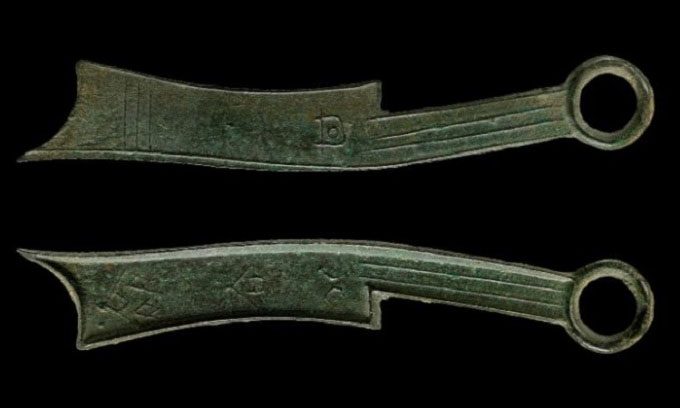The analysis results of a 2,300-year-old encyclopedia and coins have helped researchers decode the formula for bronze smelting, leading to the creation of artifacts that exist to this day.

The research team analyzed a dagger-shaped bronze coin dated to 400 BC. (Photo: British Museum)
Kao Gong Ji, the oldest encyclopedia of technology in the world, was written around 300 BC and is part of a larger collection called Zhou Li. This ancient text includes six chemical formulas for mixing bronze alloys and lists objects such as swords, bells, axes, knives, and mirrors, along with their manufacturing processes.
Over the past century, researchers have struggled to translate the names of two key materials: “jin” and “xi.” Experts believe these terms correspond to copper and tin, which are essential components in the bronze smelting process. However, when attempting to recreate the formula, they obtained metals that did not match the composition of ancient Chinese artifacts.
In a study published on August 9 in the journal Antiquity, two scientists reported that they have accurately identified the true meanings behind these mysterious materials. This discovery enhances our understanding of ancient bronze alloy production, especially since large-scale production occurred long before the six formulas were shared in the Kao Gong Ji, according to co-author Ruiliang Liu, curator of the Chinese Collection at the British Museum in London.
In modern China, jin means gold. However, the ancient meaning of this term could be copper, a copper alloy, or even metal. This is why it is challenging to pinpoint the specific materials. “These formulas were used in the largest copper production industry on the Eurasian continent at that time. Researchers have attempted to recreate the process for over 100 years but have failed,” Liu stated.
Liu and the lead researcher Mark Pollard, a professor of archaeological science at the University of Oxford, analyzed the chemical composition of Chinese coins minted around the time the Kao Gong Ji was written. Previously, they believed the coins were made from copper mixed with tin and lead. Their analysis revealed that the chemical composition of the coins resulted from mixing two pre-prepared alloys: one alloy consisted of copper, tin, and lead, while the other consisted of copper and lead. The research team concluded that jin and xi were likely these two pre-mixed alloys.
This discovery indicates that ancient Chinese bronze alloy production relied on combining alloys rather than using pure metals. Through this study, Liu and Pollard can gain further insights into mass production processes during the Shang and Zhou dynasties, as well as decode many other ancient metallurgical texts from various cultures and regions in the future.




















































